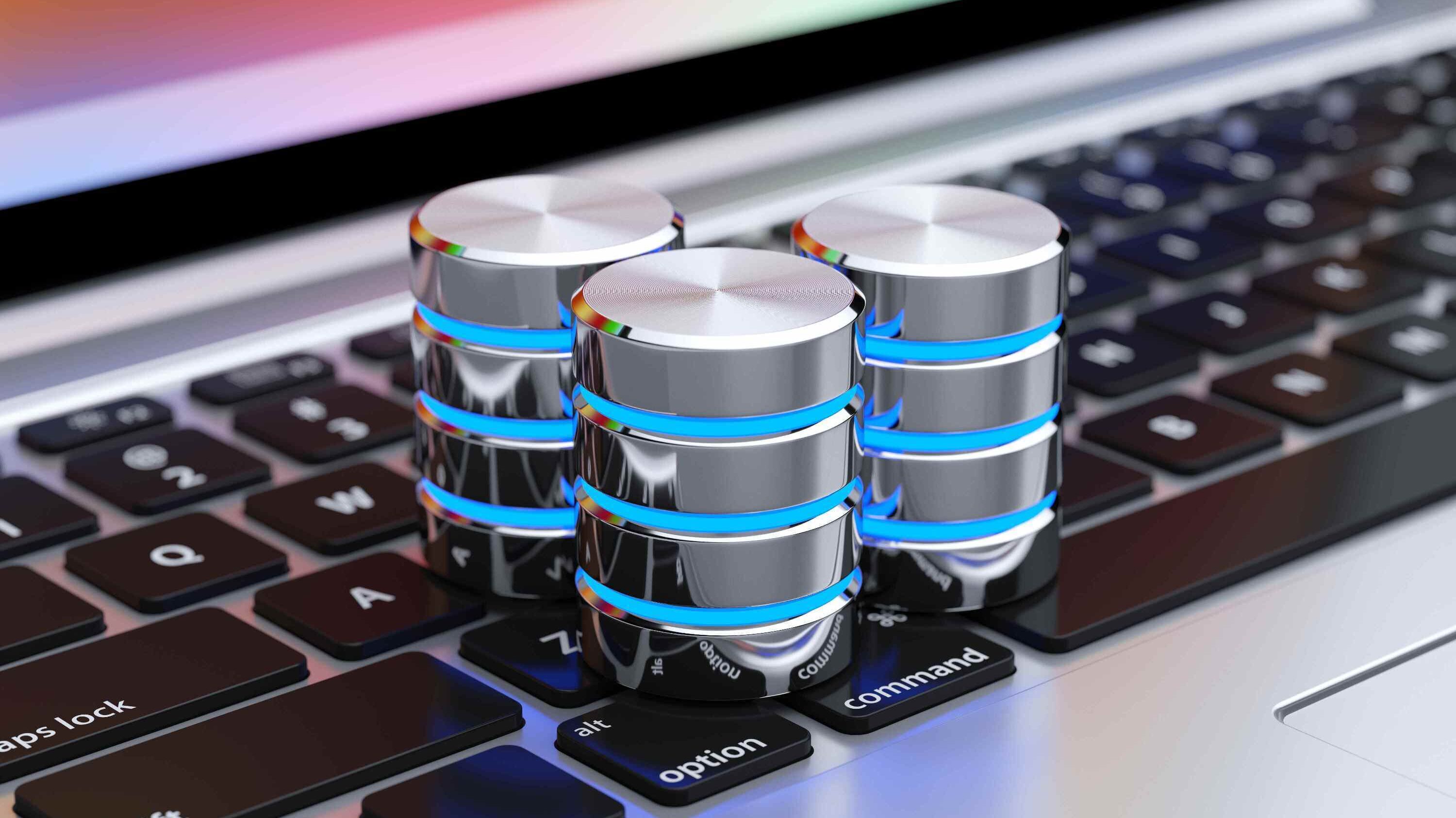Database Management System (DBMS) is a software application that allows users to manage, organize, and store data in a database. It provides users with an interface to interact with the database, allowing them to perform various operations such as adding, modifying, retrieving, and deleting data. The purpose of a DBMS is to provide a centralized and structured way of managing data that can be accessed by multiple users or applications.
DBMS also guarantees data consistency, accuracy, and security. It can handle large volumes of data and provides various features such as backup and recovery, access control, and concurrency control. Some popular DBMSs are MySQL, Oracle, SQL Server, and PostgreSQL.
A simple example of a DBMS is a student management system. The system may have a database that stores information about students, such as their names, addresses, phone numbers, grades, attendance, and other relevant data.
The DBMS would allow users to perform various operations on data, such as inserting new records, updating existing records, and retrieving records based on different criteria. For example, a teacher could use the system to retrieve a list of all students who scored below a certain grade in a particular subject.
The DBMS would provide a user-friendly interface to perform these operations, making it easy for users to manage and access data. The DBMS would also ensure data consistency, security, and integrity, preventing unauthorized access or modification of the data. The student management system is a simple DBMS example that shows how a database can be used to store and manage data efficiently and effectively.
Purpose of a Database Management System
The purpose of a DBMS is to provide a centralized and structured way of managing data that can be accessed by multiple users or applications.
The DBMS provides a structured way to organize data, making it easier to manage and retrieve. It allows users to create tables, fields, and relationships between data.
The DBMS provides various security features such as access control and encryption to ensure that the data is protected from unauthorized access or modification.
The DBMS guarantees the accuracy, consistency, and timeliness of data. It provides features such as data validation and transaction management to maintain data integrity
A DBMS allows multiple users or applications to access and share data in a controlled and secure manner.
The DBMS provides a single, structured, all-in-one data management solution that guarantees accuracy, consistency, and security.
A DBMS provides features for backing up and recovering data in case of system failures or data loss.
Types of Database Management Systems
There are different types of DBMS based on their architecture, data models, and other features.
Relational DBMS (RDBMS)
This is the most widely used type of DBMS. It organizes data into tables with rows and columns, and relationships between tables are established. Examples are Oracle, MySQL, SQL Server, and PostgreSQL.
Object-Oriented DBMS (OODBMS)
This type of DBMS stores data in the form of objects, which are collections of data and methods that can perform operations on that data. Examples include db4o and ObjectStore.
Graph DBMS
This type of DBMS is used to store and manage data with complex relationships between entities. It uses nodes, edges, and properties to represent data and relationships. Examples include Neo4j and OrientDB.
NoSQL DBMS
This type of DBMS is designed to handle unstructured and semi-structured data. It does not rely on the traditional DBMS relational table structure but instead uses key-value pairs or document-oriented storage. Examples are MongoDB, Couchbase, and Cassandra.
Hierarchical DBMS
This type of DBMS organizes data in a tree-like structure, with parent and child nodes. It is commonly used for data storage in mainframe systems. Examples include IBM's Information Management System (IMS).
Network DBMS
This type of DBMS is similar to hierarchical DBMS but allows for more complex relationships between data. It is also commonly used in mainframe systems. Examples are Integrated Data Store (IDS) and Integrated Database Management System (IDMS).
Features of Database Management Systems

These features are essential to the proper functioning of DBMS and enable organizations to manage their data efficiently and securely.
Data Modeling: DBMS allows developers to design and create a data model that defines the structure and relationships of data in the database. This organizes and stores the data according to the application requirements.
Query Processing: DBMS provides a query processing engine that queries against the database to retrieve data. This includes parsing, optimization, and execution of queries to ensure that they are executed efficiently.
Indexing: The DBMS provides indexing techniques to help you find data faster by creating indexes on columns commonly used in queries. Indexing helps to improve query performance and reduce the time it takes to retrieve data.
Security: DBMS provides various security features such as access control, authentication, and encryption to protect the data. This includes user authentication, authorization, and verification to prevent unauthorized access to data.
Benefits and Challenges of Database Management Systems
Benefits
Challenges
Benefits of Database Management Systems
Here are some of the key benefits of Database Management Systems (DBMS):
Improved Data Access: DBMS provides a centralized repository for data, which makes it easier to access and share data across different applications and departments. This improves data accessibility and reduces the need for manual data entry and duplication.
Increased data security: DBMS offers various security features such as access control, authentication, and encryption to protect your data.
Enhanced Data Quality: DBMS enforces data integrity rules and constraints, which helps to ensure data is accurate, consistent, and up-to-date. This improves the data quality and reduces the risk of errors and inconsistencies.
Reduced Data Redundancy: DBMS helps eliminate data redundancy by storing data in a structured and organized manner. This reduces the amount of storage space required and helps minimize data duplication and inconsistency.
Improved Data Integrity: DBMS provides various mechanisms to ensure data integrity, such as data validation rules and constraints. This helps to ensure that data is accurate, complete, and consistent, and reduces the risk of data corruption and errors.
Increased productivity: DBMS automates many database-related tasks, such as data entry, data retrieval, and data analysis, which helps to reduce manual effort and increase productivity.
Challenges of Database Management Systems
Data Security: DBMS can be vulnerable to security threats, such as hacking or data breaches that could compromise sensitive data. Organizations should implement appropriate security measures, such as encryption and access controls, to protect their data.
Data Migration: Migrating data from one DBMS to another can be a complex and time-consuming process, especially for large or complex databases. Organizations must carefully plan and execute data migrations to ensure data is transferred accurately and without interruption to business operations.
Scalability: As an organization's data needs grow, DBMS may need to be scaled up to accommodate increased data volumes and user demands. Scaling a DBMS can be complex and require additional hardware or software resources.
Maintenance: DBMS require constant maintenance and updates to ensure optimal performance and data integrity. This can be time-consuming and require dedicated IT resources.
Integration: Integrating DBMS with other systems and applications can be challenging, especially if they are from different vendors or use different data formats. Integration may require custom development work or the use of middleware to facilitate communication between systems
Cost: Implementing and maintaining a DBMS can be expensive, especially for large organizations with complex data needs. Costs may include software licenses, hardware, and IT personnel to manage and maintain the system.
Complexity: DBMS can be complex and difficult to implement, especially for organizations with limited IT resources. There may be a steep learning curve to understanding the system and its various features.
Conclusion
DBMS play a critical role in modern businesses, enabling them to make better use of their data and improve decision-making. To leverage these benefits, it is important to choose the right DBMS and plan for its implementation and ongoing maintenance.
By staying informed and up-to-date on the latest trends and technologies in this field, businesses can stay ahead of the curve and unlock the full potential of their data.
Frequently Asked Questions
What is the difference between a database and a database management system?
A database is a collection of data that is stored in an organized manner while a database management system (DBMS) is software that allows users to create, access, and manage data in a database.
Can a DBMS system be used for both small and large businesses?
Yes, a DBMS can be used by businesses of all sizes, from small startups to large enterprises. It allows them to manage their data more efficiently and effectively, regardless of their size.
How can I ensure the security of my data in a DBMS?
To ensure the security of your data in a DBMS, you must implement access controls, such as password protection, and encryption. Additionally, regular backups and disaster recovery plans can help prevent data loss in case of a security breach or other disaster.
Why is DBMS important?
DBMS is important because it provides a structured and secure way to manage data efficiently, improving data quality, decision-making, and overall business performance.
What is Structured Query Language (SQL)?
Structured Query Language (SQL) is a programming language for managing and manipulating relational databases. It is the standard language used to communicate with a DBMS (Database Management System) to create, modify, and query databases.
What's the difference between a database and a spreadsheet?
A database and a spreadsheet are both tools used to store and organize data. Databases are designed for efficient, secure, and scalable management of large volumes of structured data, while spreadsheets are better suited for smaller, ad-hoc data analysis and manipulation by individual users.

Yetunde Salami is a seasoned technical writer with expertise in the hosting industry. With 8 years of experience in the field, she has a deep understanding of complex technical concepts and the ability to communicate them clearly and concisely to a wide range of audiences. At Verpex Hosting, she is responsible for writing blog posts, knowledgebase articles, and other resources that help customers understand and use the company's products and services. When she is not writing, Yetunde is an avid reader of romance novels and enjoys fine dining.
View all posts by Yetunde Salami




















